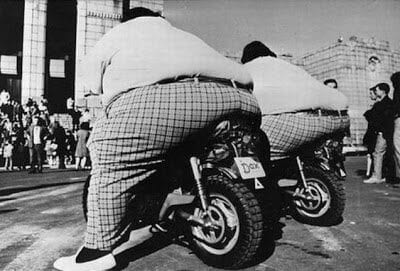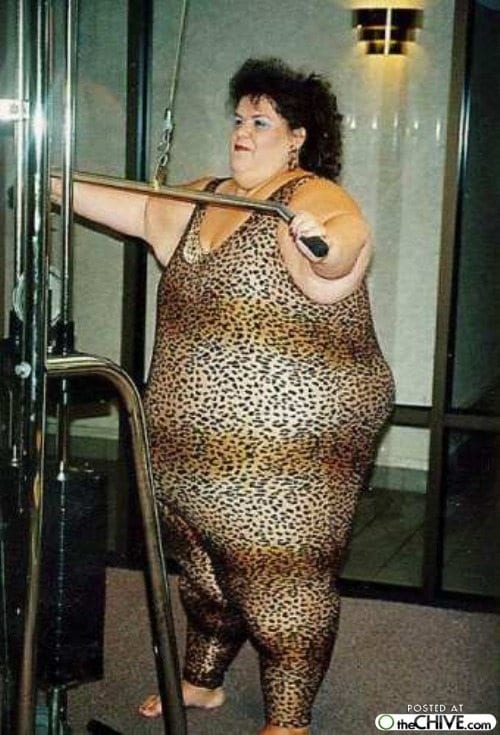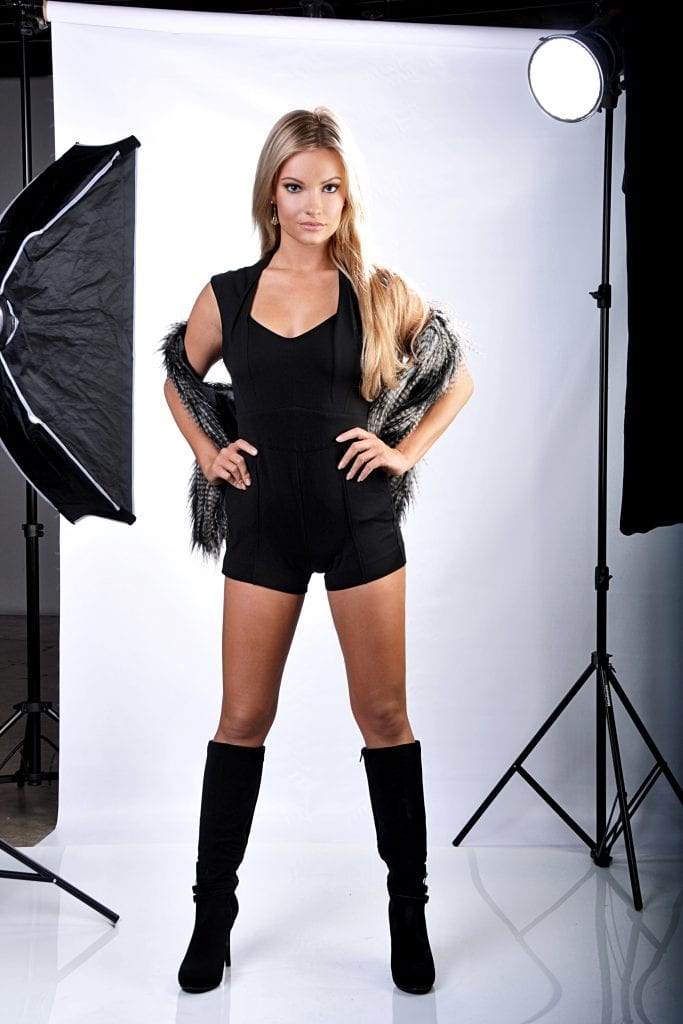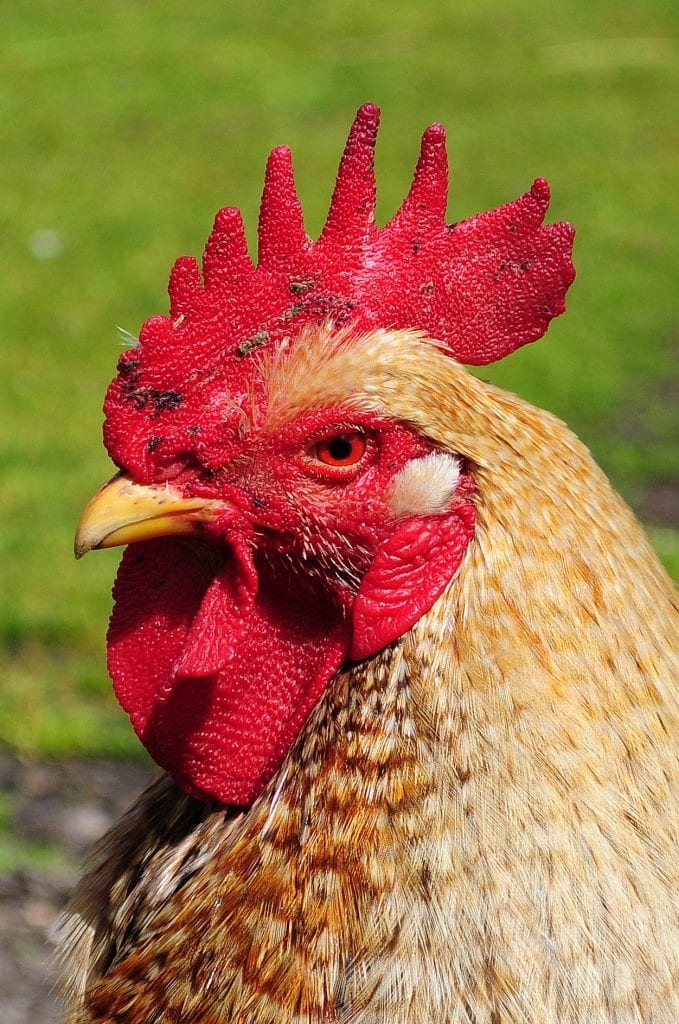We’re all afraid of something.
Some fears are more common than others. We all know at least someone who is afraid of heights or afraid of spiders. Even the fear of clowns isn’t so farfetched. But, some people genuinely fear what most would consider everyday sights or activities.

[adinserter block=”3″]
[adinserter block=”8″]
Has showering or brushing your hair ever triggered panic attacks? They have in some people. They suffer from some of the most bizarre reported phobias. Like all phobias, they stem from past traumatic experiences associated with the activity or sight that’s feared.
Regardless of the type, anyone with a fear that’s interfering with everyday life should consult a therapist.
Read on to learn more about these phobias. You may have one and not even know it.
1. Achievemephobia
Strangely, people with this phobia fear what everybody else wants: Success. They suffer from achievemephobia. For these people, the thought of moving up in the world could incite panic. They often refuse to set goals. They stay in the same position they’re in, even though the next step is within reach.

People with achievemephobia may fear success because of the added challenges and responsibilities that come with it. They may not want to risk loosing the comfortable spot they’re in for the unknown. Even fame can be a burden. Some rather have a small backing than be at the center of everyone’s attention and everyone’s judgment.
Some achievemephobics are also afraid of what they may lose to success. They fear loved ones would become envious of them and drive their relationship apart.
In severe cases, the pressure of success causes the patient to engage in destructive behavior like abusing alcohol and drugs. They’re driven to suicide in the most extreme situations. Still, many have overcome this fear to become leaders like CEOs and bank presidents.

[adinserter block=”7″]
[adinserter block=”2″]
2. Genuphobia
People with this fear probably think the summer time is hell on earth. And not because of the heat; but, because everyone is walking around in shorts and skirts. They suffer from genuphobia, the fear of knees. The sight of knees can cause nausea. And many burst into panic attacks when others touch their knees or brush up against them.

[adinserter block=”3″]
[adinserter block=”8″]
This rare phobia can stem from having a traumatic knee injury or seeing someone else have one. For some, it comes from an extremely difficult time adjusting to life outside a religious upbringing that required the sufferer to conceal the knees and not look at others.
Stephanie Cockerill’s fear came suddenly when she was in bed with her ex-boyfriend at the age of 15. Their knees brushed and she panicked.
“I hate the way knees feel and my worst nightmare would be if someone else’s knee touched mine.”
Stephanie won’t even kneel or cross her legs because of the feeling. She says she’d have them surgically removed if she could.
Her fear even extends to knees in movies. Stephanie says she went hysterical after watching a scene in a movie where someone busts his own knee caps. She has lost friends after violently lashing out at them for unintentionally touching her knees.
This kind of phobia can easily affect everyday-life, occupation and relationships. If you suffer from it, you should consider seeking professional help immediately.

[adinserter block=”7″]
[adinserter block=”2″]
3. Chaetophobia
People with this phobia would probably tremble at being at a metal concert. Not because of rowdy drunks in the moshpit, but because of all that hair! Chaetophobia is the abnormal fear of hair. People suffering from chaetophobia have reported feeling nauseous just by touching their own hair.

[adinserter block=”3″]
[adinserter block=”8″]
Some particularly dread the sight of dropped hair. This means the barbershop becomes a house of horrors. It’s nothing like the happy place depicted in classics like “Barbershop 2.” Emily White from the UK said she cried at the sight of dropped hair in a bathroom.
And chaephobtoia is a nondiscriminatory fear. Curly hair, thick hair, loose hair. Anyone of these can trigger a panic attack. Even if it’s on a pet. Chaetophobia is often treated through behavioral therapy. People sometimes start by lightly touching their own hair before moving on to larger steps in overcoming their fears.

[adinserter block=”7″]
[adinserter block=”2″]
4. Kathisophobia
Office work is a nightmare for these people. Like an actual, anxiety-driven nightmare that makes one break out in shakes and sweats. They suffer from kathisophobia, the fear of sitting down. That’s right. What most of us find comfortable and relaxing triggers paranoia in some. Every chair may as well be the electric chair.

[adinserter block=”3″]
[adinserter block=”8″]
Health conditions like hemorrhoids can make sitting down painful. Life is also very difficult to adapt to for people who have just been bound to wheelchairs. For others, the severe discomfort of sitting down is a lot less clear.
Some people feel trapped and anxious when they sit down for certain periods of time, even as short as 15 minutes. For some, sitting down for long periods of time may trigger feelings of shame because they feel they’re not getting enough exercise or are restricting themselves to a non-active position. This is sometimes seen in the elderly who feel sitting down is an unwanted reflection of their aging.

[adinserter block=”7″]
[adinserter block=”2″]
5. Oikophobia
Most of us associate the home with comfort and security. But they can be really dangerous places if you think about it. The kitchen alone is filled with sharp objects that can kill you. All those handy appliances have to plug into something and that means they risk catching fire.

[adinserter block=”3″]
[adinserter block=”8″]
What about the dangerous chemicals you use to clean the house? Ingesting any one of them can land you in the ER. Or the morgue.
While most of us brush these ideas off and ask, what are the chances? Others think a typical home is a torture maze out of “Saw.” They suffer from Oikophobia. It’s the fear of the home or contents of a home like bathrooms, bedrooms, appliances, and electrical equipment
Being surrounded by these items can lead to breathlessness, inability to speak, dizziness and rapid heartbeat.
Home sweet home? Not a chance.

[adinserter block=”7″]
[adinserter block=”2″]
6. Ablutophobia
For these people, the bathtub becomes a place of horrors. And we’re not talking about your little brother. Suffered by many adults, ablutophobia is the abnormal fear of showering, bathing or washing. The phobia can stem from a traumatic experience in water such as nearly drowning. It can even be traced back to a fictional experience.

[adinserter block=”3″]
[adinserter block=”8″]
Many horror fans said they became spooked by bathtubs after watching Alfred Hitchcock’s “Psycho.”
Some feel dizzy, nauseous, and shaky when water showers over them. So, they avoid showers and washing as much as possible. Obviously, it could lead to severe hygienic issues that would negatively affect their employment and relationships. But the loss of all that is nothing compared to the panic they face underneath a shower head.
This phobia is often treated through desensitization. People face their fears by taking baby steps. Therapists may encourage them to sit in a bathroom with the shower on. They relax while thinking positive thoughts. Some may even shower with the supervision of someone helping them cope with the anxiety.

[adinserter block=”7″]
[adinserter block=”2″]
7. Pedophobia
These people tremble when they walk by a playground or elementary school. They suffer from pedophobia, the persistent fear of children, infants or childhood. Most acknowledge their fears are groundless, but they can’t avoid the anxiety that ensues when they’re forced to interact with children or be around them.

[adinserter block=”3″]
[adinserter block=”8″]
Even the sound of children can cause panic. For some, the fear is traced back to being constantly exposed to the sound of restless or misbehaved children. Anyone who works or lives with young children can relate. But the stress reaches unbearable highs when it applies to pedophobics.
Many avoid places that might attract children. This means they have to sacrifice going to places that could otherwise bring comfort. These include parks, amusement parks, museums and more.
Pedophobia is often traced back to a traumatic experience as a child.

[adinserter block=”7″]
[adinserter block=”2″]
8. Cacomorphobia
Most people who feel revulsion at the sight of fat people are simply a-holes. The politically correct term for what drives their ideology is seizeism: the discrimination of people based on their size. Some people, however, have an irrational fear of fat people. They have cacomorphobia.

[adinserter block=”3″]
[adinserter block=”8″]
People with this phobia often sweat or tremble at the sight of an obese person. They acknowledge they’re being judgmental, but they can’t help bursting into panic while encountering obese people. This sense that they’re bad people worsens their mental health issues. They avoid public places to not risk such encounters. This behavior can severely affect their careers and relationships.
Individuals with this phobia often trace their fears back to negative experiences with fat people. Some were attacked by obese people. As children, some were bullied by fat kids, or frightened by obese people who actually meant no harm.
There are several treatments for cacomorphobia, but only a mental health professional can diagnose someone with it.

[adinserter block=”7″]
[adinserter block=”2″]
9. Venustraphobia
People with this fear probably avoid TV, the Internet, magazines, and pretty-much all media. The outside world isn’t much safer though. They suffer from venustraphobia, the fear of beautiful women. Even though they’re physically attracted to pretty women, they do all they can to avoid them. The mere sight of a pretty girl incites anxiety, nervousness, shaking, and a runway of other unwanted experiences.

[adinserter block=”3″]
[adinserter block=”8″]
For many, the fear stems back to a traumatic event involving a beautiful woman. Or, it can come from a history of negative social experiences with attractive women. Being forced to interact with these types of women likely results in poor social performance, which intensifies the venustraphobia. It also gives the sufferer yet another reason to avoid pretty girls.
If the phobic suffers from low-self esteem, one of the phobia’s root causes, that person would feel inferior around pretty women. Many venustraphobics begin treating their phobias by first tackling their low self esteem and fractured self-body image.

[adinserter block=”7″]
[adinserter block=”2″]
10. Pogonophobia
Hipsters probably rub plenty of people the wrong way. But, they would legitimately terrify the people who face this phobia. They suffer from pogonophobia, the unwarranted fear of beards. It can stem back to a disturbing experience with a bearded person. It can also be linked to media’s historic depiction of bearded men as evil. How many movie super villains with beards can you think of?

[adinserter block=”3″]
[adinserter block=”8″]
Moreover, beards have also historically been associated with poor hygiene. How often do you see a clean-shaven homeless man on TV? And how often do bearded men run for office? The US hasn’t had a bearded president since the 1800s. These negative stereotypes can fuel the paranoia of a pognophobic.
However, society is taking another look at the beard as it’s becoming more acceptable, even in the work place. This trend spells disaster for the pogonophobic who can see his career opportunities and potential relationships dwindle if he can’t interact with bearded men.

[adinserter block=”7″]
[adinserter block=”2″]
11. Dextrophobia
Look to your right. Did you see an object? If you’re panicking right now, you suffer from dextrophobia. It’s the irrational fear of objects situated to the right-hand side. This rare phobia is usually linked to an obsessive-compulsive disorder that triggers anxiety in a person when faced with objects on the right-hand side.

[adinserter block=”3″]
[adinserter block=”8″]
At work and at home, dextrophobics like to arrange everything to their left-hand side. And unless they work from home or have their own offices or cubicles, the workplace can be very terrifying for the dextrophobic. The public sphere isn’t any more safe. Some walk backwards or sideways to avoid looking at objects to their right, whether they are signs or lampposts. You can see how driving can also be scary and even dangerous.
Dextrophobia can be linked to various other underlying mental-health issues. Anyone suffering from it should seek professional help immediately.

[adinserter block=”7″]
[adinserter block=”2″]
12. Gymnophobia
The people with this phobia probably wear sweaters and pants throughout all four seasons. They suffer from gymnophobia, the fear of being naked or being seen naked. It can also extend to seeing other people naked. This fear can stem from perceived inferiority, and a detrimental notion of the proper body image.

[adinserter block=”3″]
[adinserter block=”8″]
It can manifest itself into extreme body shame in which people do all they can to conceal their body and even its shape. In some cases, gymnophobia traces back to a past event where a person was exposed in front of several others. Being seen again naked, or slightly exposed, can bring back the shame and embarrassment of that incident.
The phobia can also be linked to a general anxiety about sexuality.

[adinserter block=”7″]
[adinserter block=”2″]
13. Alektorophobia
These people fear what goes “Cluck!” in the night. Alektorophobia is the fear of chickens, flying animals or feathered creatures. This fear can also extend to chicken eggs and feathers. The phobia may stem from an unpleasant experience with a chicken such as getting plucked by one at a young age.

[adinserter block=”3″]
[adinserter block=”8″]
The idea isn’t too farfetched considering many people grew up on farms surrounded by swarms of chickens. And anyone who’s seen a mass of live chickens knows they create a ruckus that can drive you pretty crazy. People with alektorophobia may think chickens are aggressive, evil, and conspiratorial.
According to PhobiaSource.com, people with alektorophobia “may feel the chicken always has an eye on the patient when they are around.”
Even the thought of a chicken could cause anxiety and hysterical behavior.

[adinserter block=”7″]
[adinserter block=”2″]
14. Cynophobia
Some of us consider dogs to be man’s best friend. Who wouldn’t feel warm at the sight of a three puppies trying to squeeze into the same boot? Those with the most extreme cases of cynophobia, the fear of dogs. Often, this fear is linked to a traumatic event involving dogs.

[adinserter block=”3″]
[adinserter block=”8″]
Some have been attacked by dogs or seen a loved one get hurt by dogs. So, they associate dogs with evil and danger. Parents can also unwittingly instill a fear of dogs in their children by warning them to not pet dogs or approach them.
Considering the fact that it’s pretty damn hard to avoid a dog, people with severe cases can live very troubled lives. Their fears can negatively affect their relationships and occupations. Some dread the encounter so much, they avoid public places. In severe cases, people panic and think they’re going to die when they see a dog.
Some even lose their grip on reality.

[adinserter block=”7″]
[adinserter block=”2″]
15. Food Neophobia
If you’re a parent, you’ve probably walked away covered in pees and broccoli after trying to feed your kid vegetables. But why do they despise greens so much other than the obvious? They may legitimately be afraid of them. Some psychologists call it food neophobia, the fear of new or unfamiliar food.

[adinserter block=”3″]
[adinserter block=”8″]
Psychologist John Prescott believes that developing food preferences is a natural stage in child development that happens around the ages of two and seven. He says kids may be tapping into a primitive survival strategy when they enter “a world of potential foods whose safety is uncertain.”
Because most green vegetables tend to have a hint of bitterness, kids’ taste buds may register them as potentially poisonous. But food neophobia can carry into adulthood.
Some people refuse to eat what they didn’t make, or try exotic foods. And some of you badasses out there still don’t eat your vegetables.

[adinserter block=”7″]
[adinserter block=”2″]
16. Nomophobia
Nomophobia is the fear of losing your mobile phone or losing service. You would think this one only affects 16-year-old girls, but it’s a lot more widespread than that. According to Psychology Today, 66 percent of adults suffer from it.

[adinserter block=”3″]
[adinserter block=”8″]
People have even reported anxiety over a dead battery or loosing credit.
Nomophobia is short for “No More Phone.” It was coined by the UK research firm YouGov in 2010.
Their study showed the average adolescent would rather lose a pinky than loose a phone. Of course, this could be linked to young peoples’ tendency to exaggerate (I wouldn’t go testing this by walking onto a college campus with a machete though).
The study also showed 65 percent of people sleep with or next to their phones, 34 percent answer their phones during sex, and one in five would rather go for a week without shoes than a week without their phones.
Nonetheless, many psychologists simply define nomophobia as society adapting to new technology, rather than an actual phobia or addiction that can interfere with everyday life.
Can you put down your phone for a day? Please don’t if you’re reading this on a smart phone!

[adinserter block=”7″]
[adinserter block=”2″]
17. Panphobia
Now that you’ve made it through this list, you have nothing left to fear but fear itself. And it’s out there. Panphobia is the fear of being afraid. Panphobics shiver at the thought of becoming afraid of an object or situation, and all the anxiety that comes with it.

[adinserter block=”3″]
[adinserter block=”8″]
Some people have multiple phobias, and panphobia terrifies them of developing more. Often, this phobia is triggered by internal thoughts and stimuli rather than something external. The fear lives in you, and it’s truly a terrible state to live in.
Symptoms include crying, sweating, shaking, screaming and other hysterical behavior – for no apparent reason. It plays out like a horror movie in your mind, and you’re every victim. In extreme cases, panphobics commit suicide.
Before panic spirals out of control, a panphobic should seek help from a therapist.

[adinserter block=”7″]
[adinserter block=”2″]